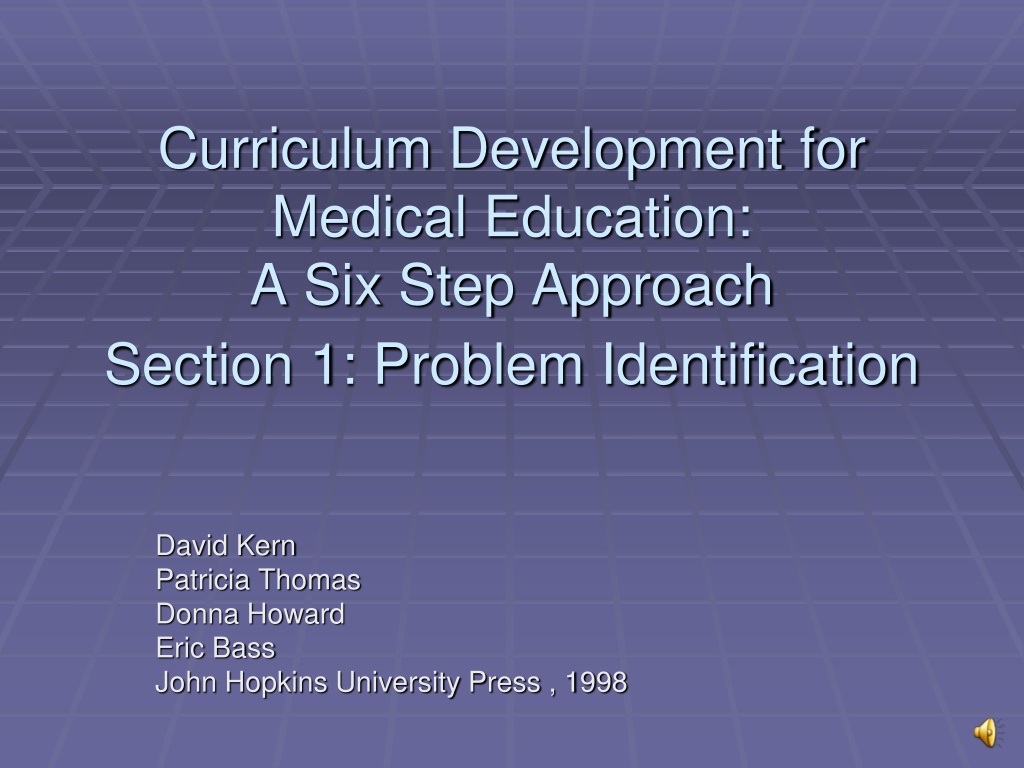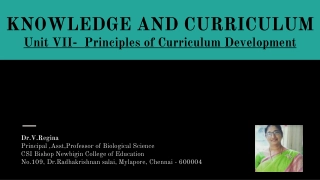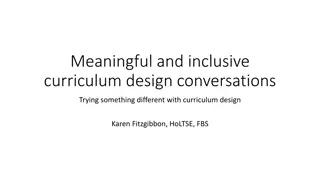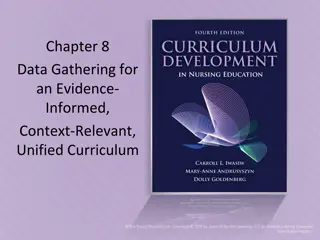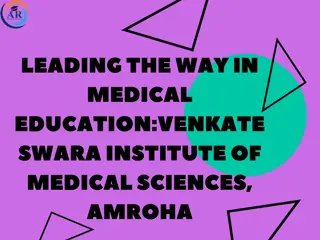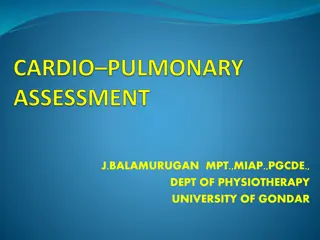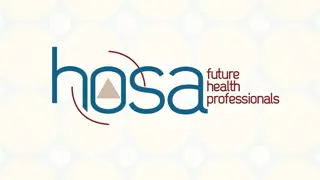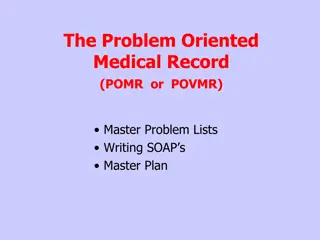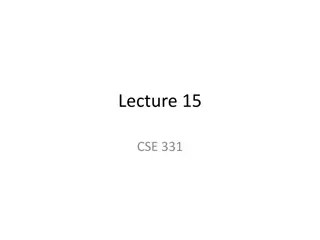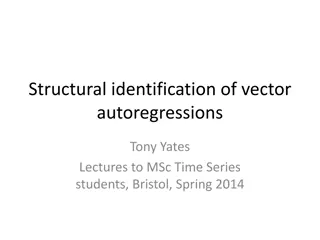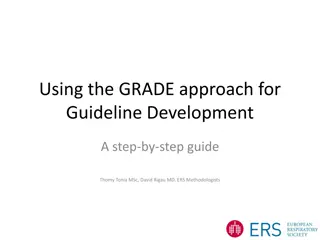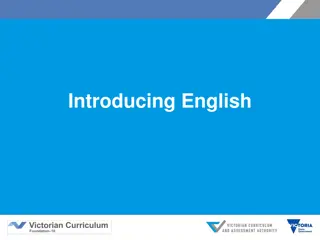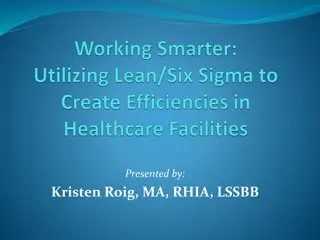Six Step Approach to Problem Identification in Medical Curriculum Development
In this comprehensive guide on curriculum development for medical education, the focus is on identifying and addressing key problems in the curriculum design. The six-step approach outlined covers problem identification, needs assessment, goal setting, educational strategies, implementation, and evaluation. Through this process, educators can enhance the effectiveness of medical education by recognizing, analyzing, and resolving curriculum-related issues. The content delves into the importance of problem identification, relevant curricular elements, comparison with ideal solutions, and actionable steps for improvement.
Download Presentation

Please find below an Image/Link to download the presentation.
The content on the website is provided AS IS for your information and personal use only. It may not be sold, licensed, or shared on other websites without obtaining consent from the author. Download presentation by click this link. If you encounter any issues during the download, it is possible that the publisher has removed the file from their server.
E N D
Presentation Transcript
Curriculum Development for Medical Education: A Six Step Approach Section 1: Problem Identification David Kern Patricia Thomas Donna Howard Eric Bass John Hopkins University Press , 1998
Contents Step 1 Problem Identification and General Needs Assessment Step 2 Needs Assessment for Targeted Learners Step 3 Goals and Objectives Step 4 Educational Strategies Step 5 Implementation Step 6 Evaluation and Feedback
Goals of This Presentation Why is problem identification important in curriculum design? What curricular elements need to be included? How to compare a curricular problem with an ideal solution. Completion of exercise 1
Step 1a problem Identification : The first step is to identified the health problem or learning problem that needs to be addressed in your practice. This could be a disease state that has emerged in your population, a national epidemic, or a well known health problem that you feel is not being satisfactorily addressed in your current curriculum.
Complete Problem Identification Who does the problem effect: Patient Learners Medical Educators
What does it effect? What does it effect Clinical outcomes Educational effectiveness Educational outcomes QOL Other health care resources
How big is the problem? To what extent is this a problem in my practice ? High Priority Medium Priority Low Priority
What is the current status? What is current being done about it ? Does anyone else have the same pedagogical problems ? How are they resolving them ? Where are sources of possible solutions?
Are there barriers to solution? What are the barriers to problem resolution? Time , Personnel Money Knowledge Community issues KNOWING THERE IS A PROBLEM WITH YOUR CURRICULUM IS NOT ENOUGH , ONE MUST KNOW THE CIRCUMSTANCES THAT MAKES IT A PROBLEM
Step 1b : ideal solution Now if you have unlimited resources , students, faculty, instructional materials, time and money, how would you best solve this curricular problem? This step will give you the basic idea of resources that you will need to solve the problem, even if all of them are not within your reach.
General Needs Assessment The difference between the actual and ideal curriculum model is the general needs assessment, it will provide an idea of your needed resources
Exercise 1 Identify one curricular problem you are experiencing, including: Who does the problem effect ? What is the extent of the problem? Have other medical educators faced and solved the same problem? What are the barriers to successful solution?
